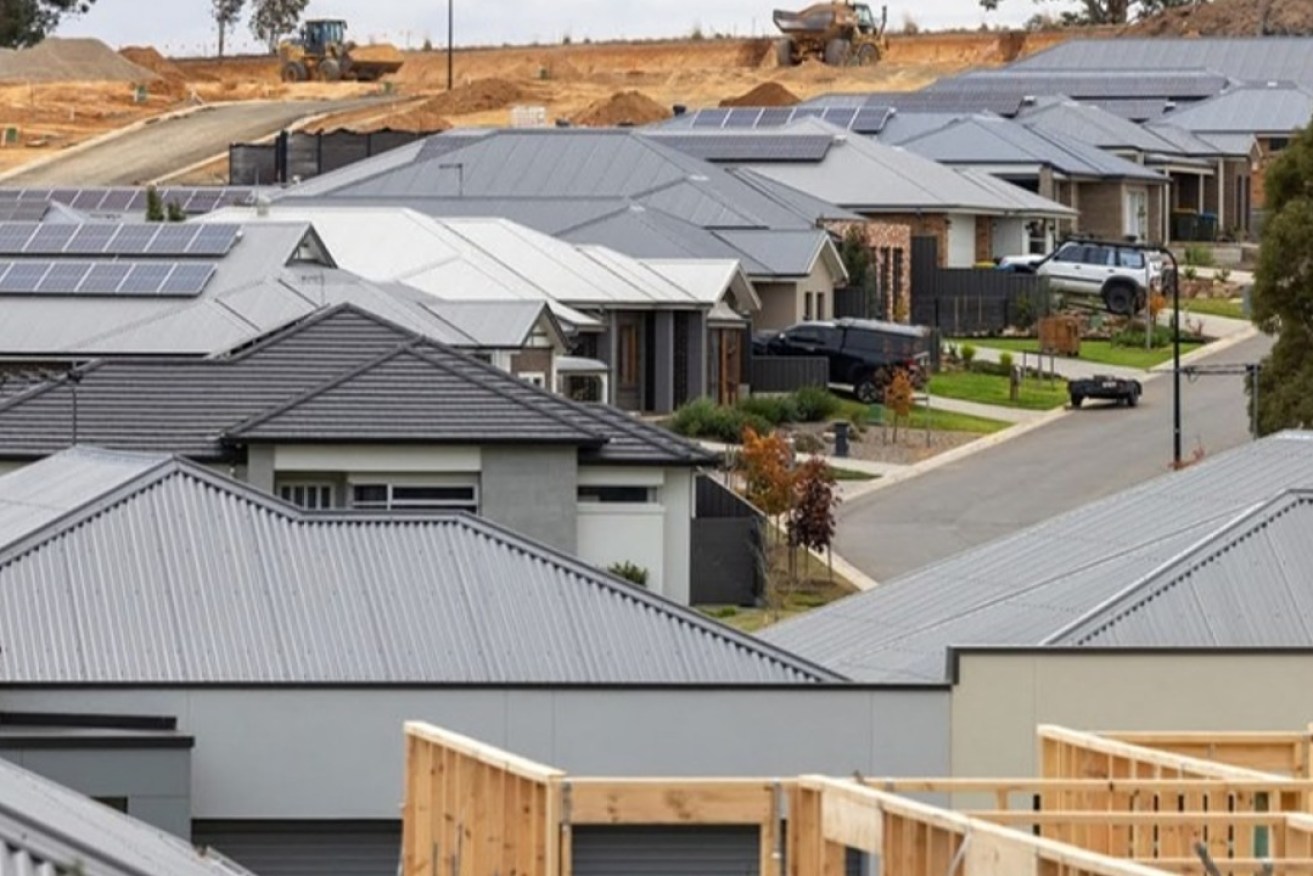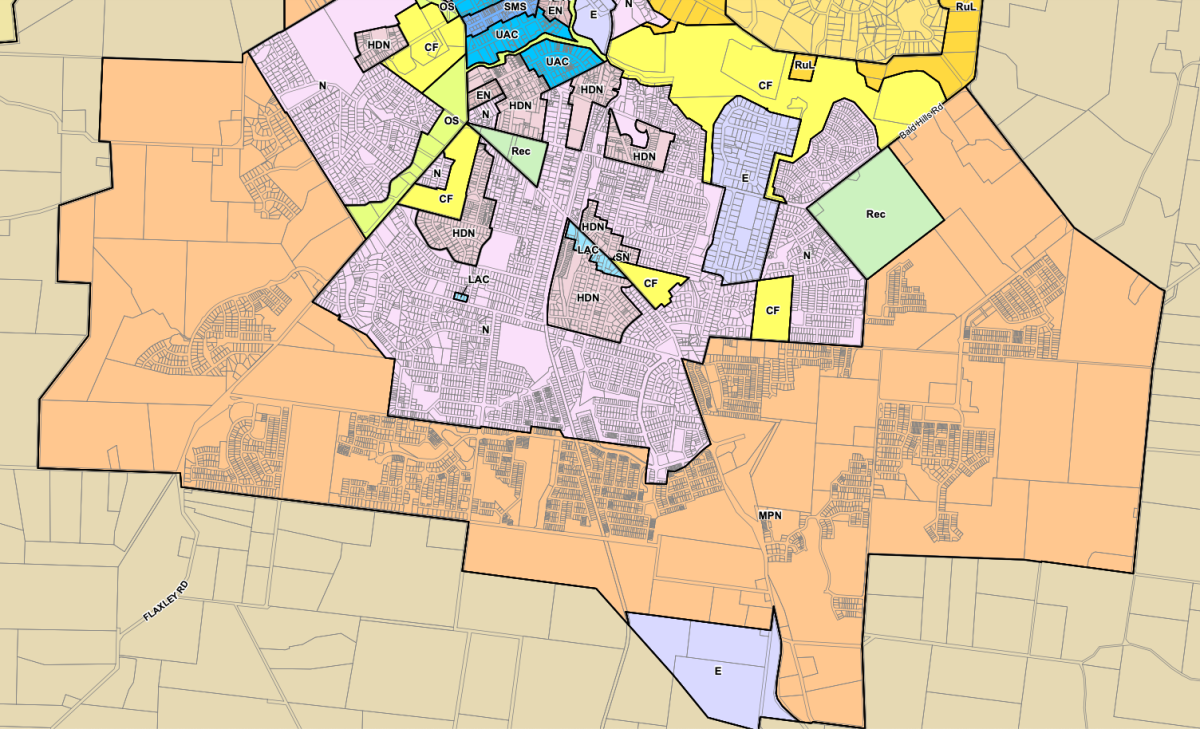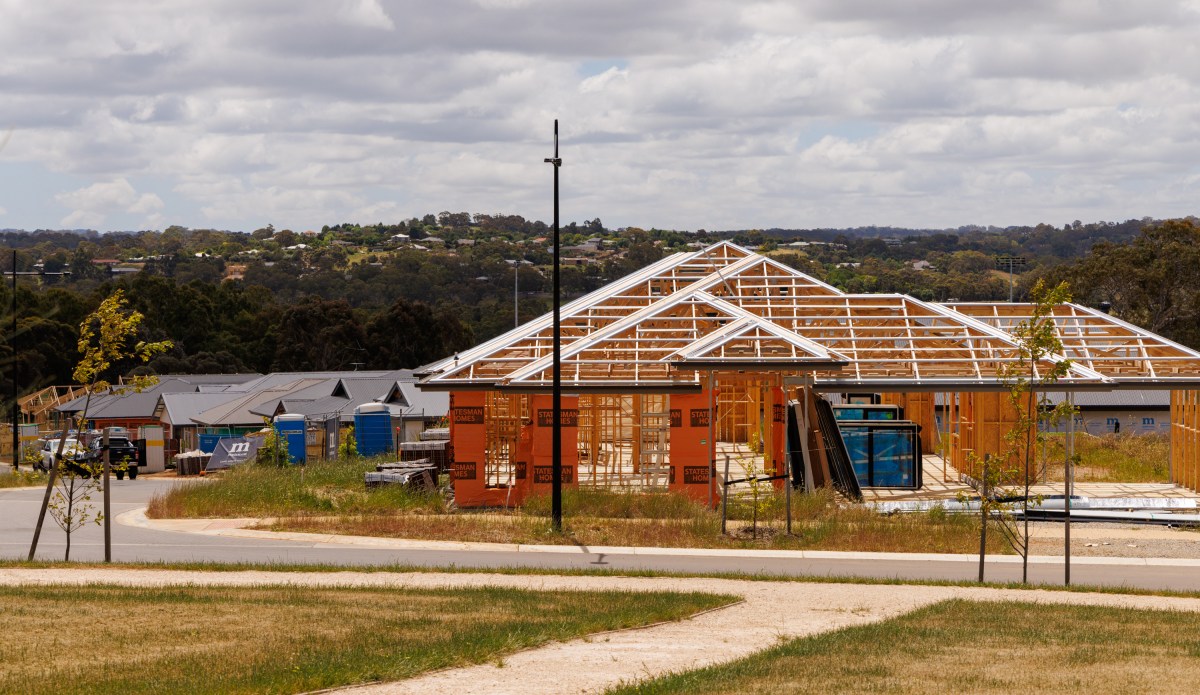Mount Barker homes exempted from national energy efficiency standard
EXCLUSIVE | New homes in the rapidly expanding Mount Barker growth area won’t have to comply with national minimum building code requirements being introduced next year to improve energy efficiency, after the state government granted an exemption following housing industry lobbying.


Housing on Mount Barker's urban fringe. Photo: Tony Lewis/InDaily
Following strong lobbying from the Housing Industry Association, Planning Minister Nick Champion last month quietly exempted the Mount Barker growth area from changes to the National Construction Code (NCC) coming into force on October 1, 2024.
The growth area, which was controversially rezoned for housing in 2010, will instead be subject to the new standards from May 1, 2026.

The dark orange “Master Planned Neighbourhood Zone” (MPN) will be exempt from the new NCC requirements until May 1, 2026. The new standards will still apply to the more central zones. Image: PlanSA
The NCC changes will require new houses to meet a seven-star energy rating – up from six-stars – meaning builders may need to provide better insulation, double and triple window glazing, lighter roof colours and more internal doors and ceiling fans to meet the standard.
Federal government regulators and South Australia’s professional body for architects say the improved standards are not costly, complicated or onerous.
But the building and construction industry say the tighter requirements could add between $15,000 and $40,000 dollars to the price of building a new home. They lobbied the government to grant an exemption for the Mount Barker and the Fleurieu Peninsula given their unique climates.
Following questions from InDaily, Planning Minister Champion’s office confirmed the NCC changes would be delayed for the Mount Barker growth area, but said no other areas were exempted.
A government spokesperson said Mount Barker had unique climate conditions and “reactive soils” which warrant the delay.
“Mount Barker has also experienced high growth and is responsible for doing the heavy lifting in providing more houses – delivering over 600 homes each year,” the spokesperson said.
“Mount Barker’s extreme polarity between the highest daytime temperatures in the middle of summer and lowest overnight temperatures in the winter months make it more challenging for the region to meet the NCC 2022 building fabric requirements (7 Star) for energy and condensation.

New housing in Mount Barker. Photo: Tony Lewis/InDaily
“Under the new code, this can bring on additional cost with the need for under slab insulation, which is more challenging in the reactive soils found in this region.
“Accordingly, the Minister made provisions to extend the Mount Barker implementation date.”
But Australian Institute of Architects SA chapter president Chris Morley said the decision would see houses in Mount Barker left in a “substandard condition” in 20 to 30 years.
“You’ll essentially end up with a whole bunch of building stock which is what we’re defining as being substandard from a liveability and a healthy buildings perspective,” Morley told InDaily.
“The concerns that we do have is that with the delayed implementation… is that the NCC is meant to be reviewed every five years, and what will happen is that we won’t even have this current standard fully implemented by the time they start a review process again.
“It’s actually just going to exacerbate the situation.”
Morley said a seven-star energy rating is “relatively easy to achieve” from an architect’s perspective through “really simple design”.
He said some “really basic passive solar principles” along with “a little bit of insulation” can be enough to reach the standard.
“The difference between six and seven (stars) is a relatively simple step,” he said.
“It’s when you start… trying to get up from seven to 10 stars that you really start to have a more complex building – not that it’s not achievable, it’s just more complex and detailed.”
Mount Barker District Council said it is also disappointed with the minister’s decision, arguing that the existing six-star minimum standard is “a relatively low bar to achieve”.
Marc Voortman, council’s general manager planning and community, said the council was concerned the exemption was “another knock to Mount Barker” after the infrastructure failures of the Rann Government’s 2010 rezoning.
“Council has made known its disappointment at this decision and queried the technical matters driving the decision around the ‘carve out’ of Mount Barker Growth area with the Minister,” Voortman told InDaily.
“Whilst issues of affordability and housing availability are understood and appreciated, it is disappointing that the positive steps the Minister has made in the NCC changes will not apply to the predominant area of housing growth in Mount Barker.
“Council remains concerned that this is another knock to Mount Barker following on from the widely reported infrastructure failures of the State Government and its approach in 2010 to re-zone 1300 hectares of rural land to residential without a proper plan for infrastructure.”
The Australian Building Codes Board (ABCB) agreed in August 2022 that all new residential dwellings in Australia would need to reach the seven-star energy standard.
The ABCB, which is responsible for writing the NCC, allowed states and territories to set their own timetables for when the new energy and accessibility requirements come into force
South Australia’s October 2024 implementation date was in the middle of the pack for Australian states. The May 2026 implementation date for Mount Barker is behind most of Australia.
The government spokesperson said the challenges facing the housing sector “are not unique to South Australia”, highlighting that other states have made exemptions to the code.
“Every state and territory has offered concessions and in some cases full permanent exemption from particular aspects of the code which relate to their local conditions,” the spokesperson said.
Housing Industry Association SA executive director Stephen Knight said his association lobbied “strongly” for the Mount Barker exemption.
He said the delayed implementation was a “sensible compromise” and did not mean the industry and government were abandoning seven-star energy ratings in Mount Barker.
“Mt Barker is in climate zone 6 along with the whole of the Fleurieu Peninsula and it is only in the area of Mt Barker which is popular with first home buyers and young families on limited budgets that have the time delay,” he said.
“The cost increase from six to seven star is significant and may well be enough to lock people out of the market, particularly given the rapid cost of construction increase over the last few years.
“This is just a delay to alleviate the deposit cost pressures.”
Knight said the number of homes built in Mount Barker that won’t meet the new standard would be “small, perhaps only a few hundred”.
“Where this has landed is a sensible compromise and will allow consumers to make choices based on their financial circumstances,” he said.
“It would be disappointing if the additional cost to meet this standard would preclude families from purchasing a new home and having to settle for an older home, that is unlikely to meet even a modest three-star energy rating.”
A working group comprising the council, architects institute and the construction, housing and development lobbies has also been formed to “support builders in bringing Mount Barker online with 7-star”, the government spokesperson said.




